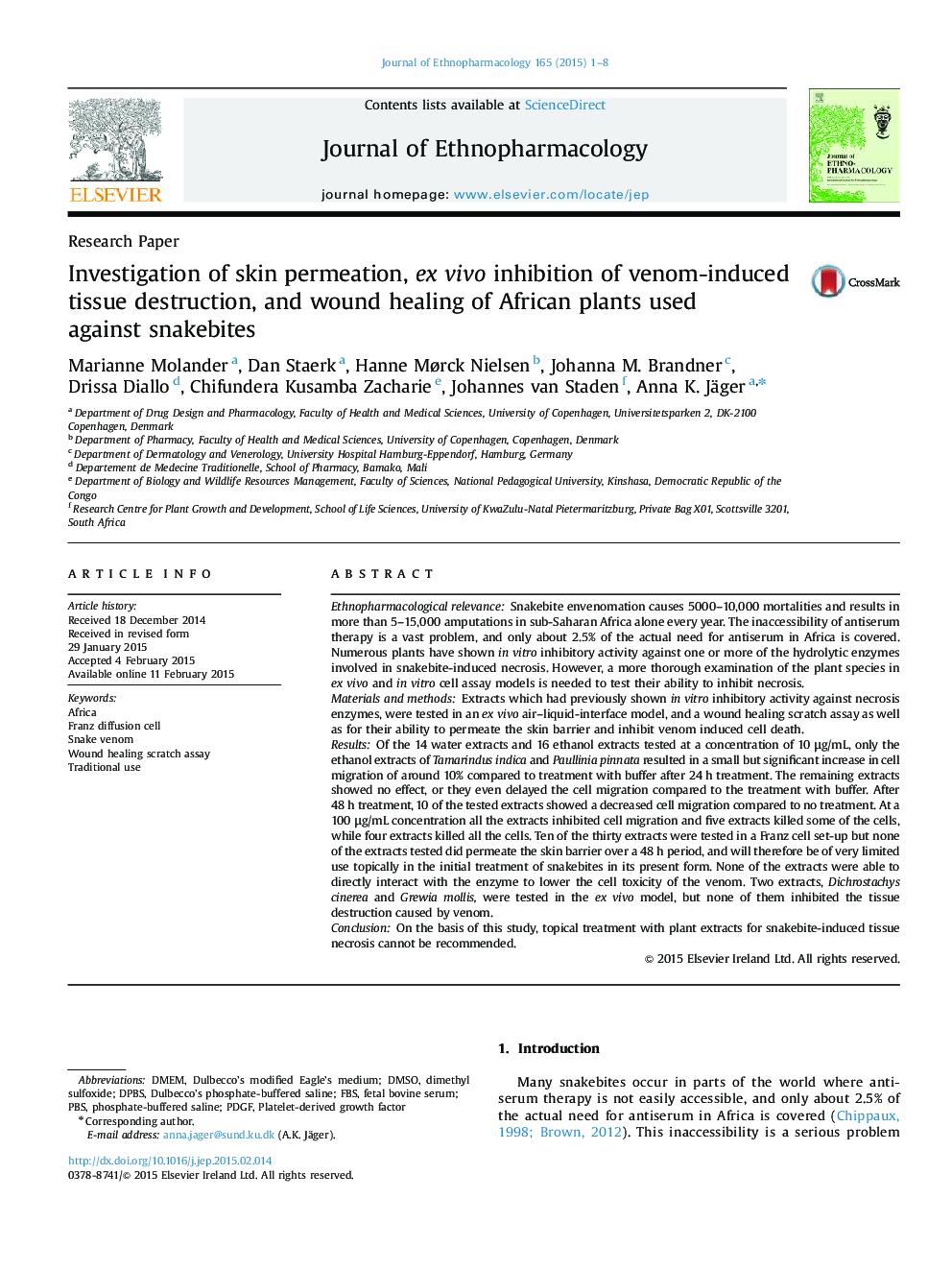| کد مقاله | کد نشریه | سال انتشار | مقاله انگلیسی | نسخه تمام متن |
|---|---|---|---|---|
| 2545050 | 1560397 | 2015 | 8 صفحه PDF | دانلود رایگان |
Ethnopharmacological relevanceSnakebite envenomation causes 5000–10,000 mortalities and results in more than 5–15,000 amputations in sub-Saharan Africa alone every year. The inaccessibility of antiserum therapy is a vast problem, and only about 2.5% of the actual need for antiserum in Africa is covered. Numerous plants have shown in vitro inhibitory activity against one or more of the hydrolytic enzymes involved in snakebite-induced necrosis. However, a more thorough examination of the plant species in ex vivo and in vitro cell assay models is needed to test their ability to inhibit necrosis.Materials and methodsExtracts which had previously shown in vitro inhibitory activity against necrosis enzymes, were tested in an ex vivo air–liquid-interface model, and a wound healing scratch assay as well as for their ability to permeate the skin barrier and inhibit venom induced cell death.ResultsOf the 14 water extracts and 16 ethanol extracts tested at a concentration of 10 μg/mL, only the ethanol extracts of Tamarindus indica and Paullinia pinnata resulted in a small but significant increase in cell migration of around 10% compared to treatment with buffer after 24 h treatment. The remaining extracts showed no effect, or they even delayed the cell migration compared to the treatment with buffer. After 48 h treatment, 10 of the tested extracts showed a decreased cell migration compared to no treatment. At a 100 μg/mL concentration all the extracts inhibited cell migration and five extracts killed some of the cells, while four extracts killed all the cells. Ten of the thirty extracts were tested in a Franz cell set-up but none of the extracts tested did permeate the skin barrier over a 48 h period, and will therefore be of very limited use topically in the initial treatment of snakebites in its present form. None of the extracts were able to directly interact with the enzyme to lower the cell toxicity of the venom. Two extracts, Dichrostachys cinerea and Grewia mollis, were tested in the ex vivo model, but none of them inhibited the tissue destruction caused by venom.ConclusionOn the basis of this study, topical treatment with plant extracts for snakebite-induced tissue necrosis cannot be recommended.
Figure optionsDownload high-quality image (239 K)Download as PowerPoint slide
Journal: Journal of Ethnopharmacology - Volume 165, 13 May 2015, Pages 1–8
